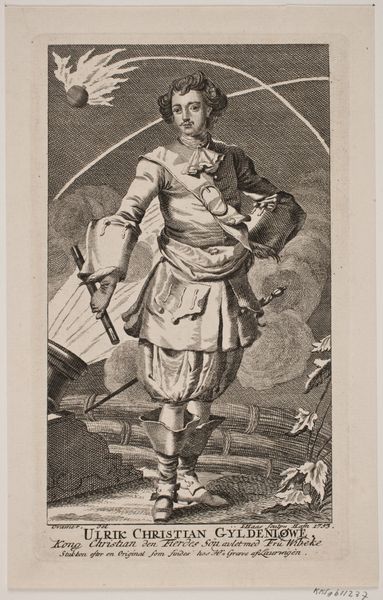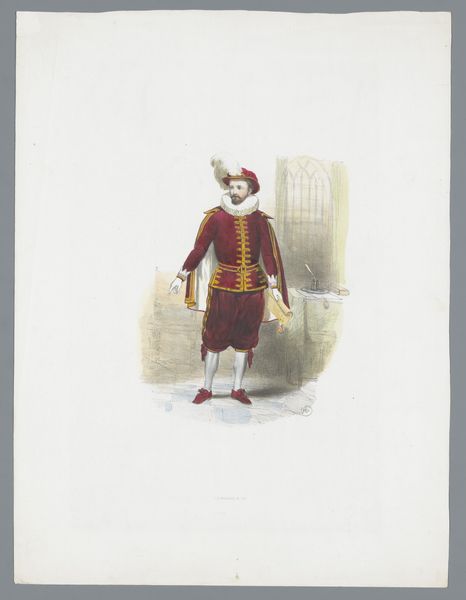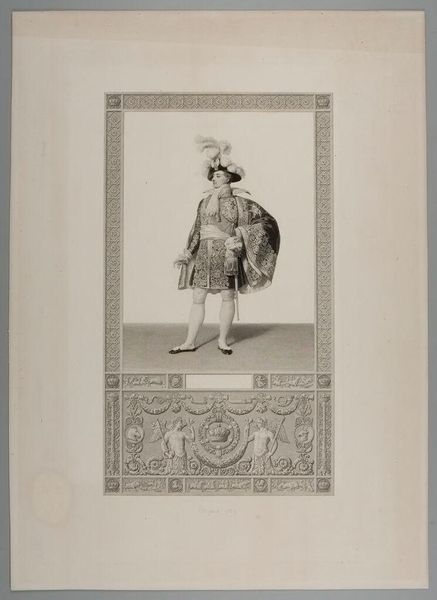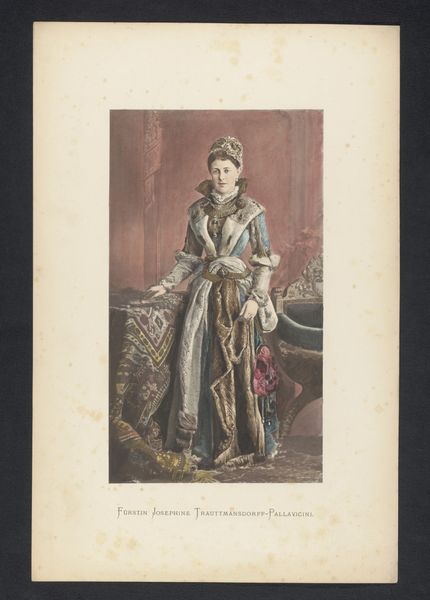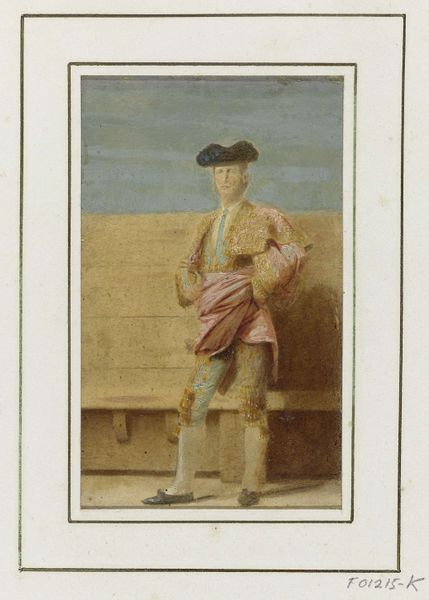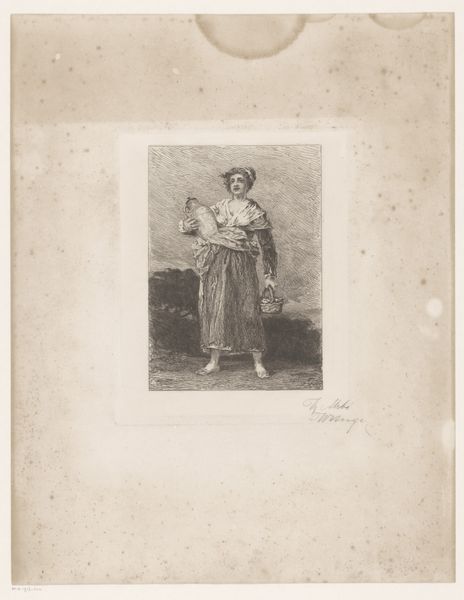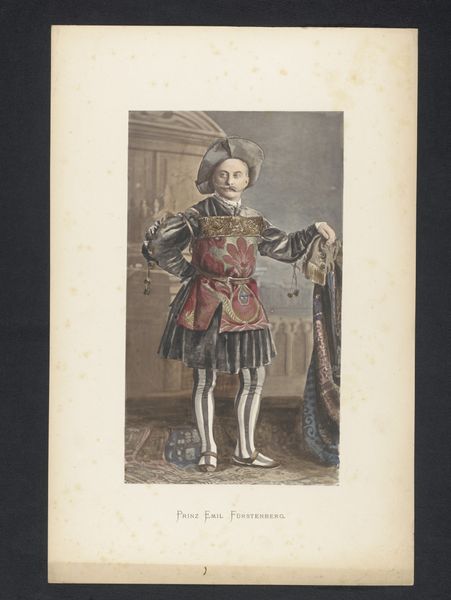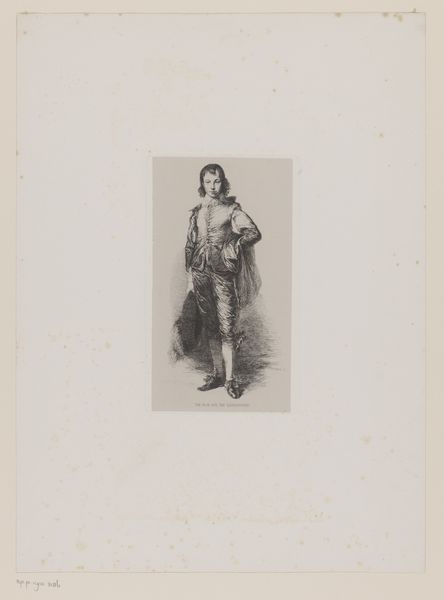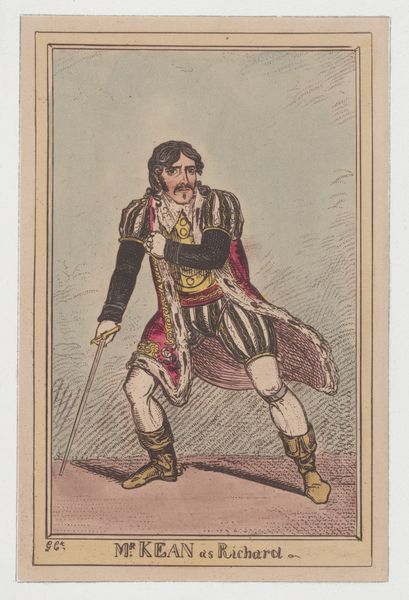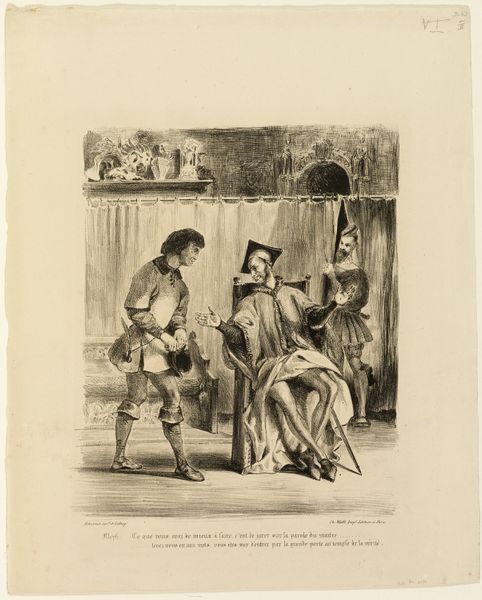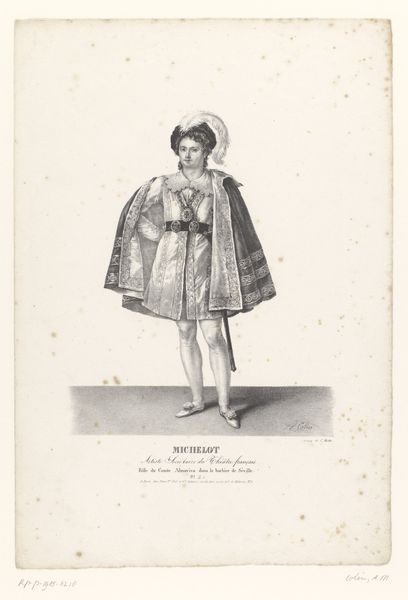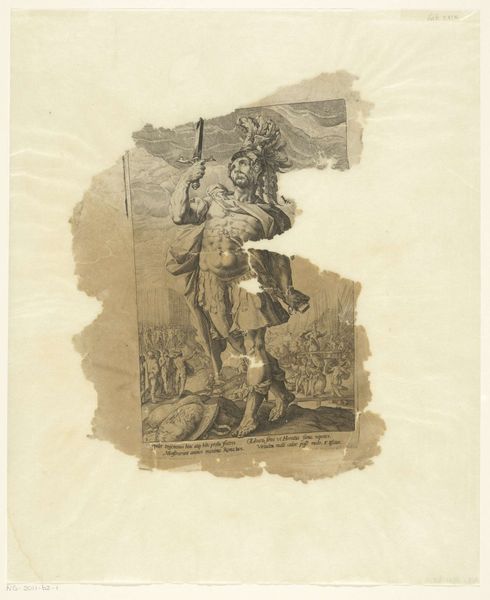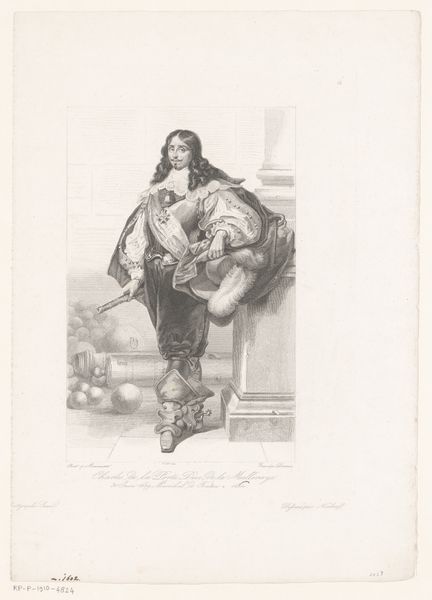
Portret van een onbekende stierenvechter (matador), met rode doek, degen en stierenkop c. 1860 - 1875
0:00
0:00
Dimensions: height 87 mm, width 52 mm
Copyright: Rijks Museum: Open Domain
Curator: This is a watercolor illustration by Juan Laurent, titled "Portret van een onbekende stierenvechter (matador), met rode doek, degen en stierenkop," dating roughly between 1860 and 1875. Editor: Gosh, it’s striking! There's this somber mood created by that greyish background... it's not a triumphant scene. It makes you wonder about the lonely burden this guy's carrying, almost like he is dancing with destiny himself. Curator: Yes, I see that, the somewhat muted colour palette emphasizes that feeling. The bullfight narrative is strongly embedded in material culture here – the ornate suit, the precise construction of the cape. Bullfighting represents this consumption of a certain spectacle... I wonder what Laurent wanted to say, in producing these kind of works. Editor: That red cape draws my eye first—a splash against all those earth tones, almost desperate to ignite the drama. I like the composition, really, there’s a very odd sense of scale; this intense face-off shrunk into what almost looks like a painted card, like some secret held tightly between thumb and forefinger. Is it really a watercolor painting, by the way? That’s cool if it is. Curator: Absolutely, that’s right. You can tell by the way the pigments interact with the paper, though of course this reproduction doesn't entirely demonstrate the artwork materiality. But to think of it—watercolor wasn't always the 'easy' medium we associate with Sunday painting—it was crucial in preparatory studies, scientific illustrations. Editor: Which could also explain the subdued colours, now I think about it. It’s like looking at a memory fading into the past... but maybe not the matador's. Or do you think it romanticises the experience? The lonely hero aesthetic, after all. Curator: Romanticism is definitely one way of reading this painting. I can’t help but reflect on its production, the fact it’s one of many… there’s a question to be asked: to what degree does its form, its industrial character, dictate the ‘art’ we see? Editor: You know, maybe it doesn't romanticise it. Now I think about the look on his face… He is looking, very calmly it seems, to the left of himself: at his end perhaps? The romance may have long gone for him. Curator: True enough, I hadn't quite read the expression like that before, thanks. It really highlights how works like these can take on diverse interpretations as we continue to unpack their cultural relevance. Editor: Indeed! An illustration of an intense moment that sparks a colourful narrative. I like it a lot!
Comments
No comments
Be the first to comment and join the conversation on the ultimate creative platform.
